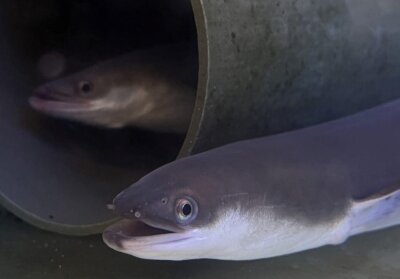
Japanese eels (Anguilla japonica) are listed as an endangered species by the International Union for Conservation of Nature. They are a commercially important species extensively harvested for food. As commercial breeding of Japanese, American, and European eels is challenging, wild stocks are harvested in aquaculture. Worse still, their populations dwindle due to climate change, habitat loss, water pollution, and altered ocean currents .
A research study led by Professor Chris Wong from the Department of Biology at HKBU has presented the first chromosome-level assembly of the Japanese eel genome and examined the large chromosome reorganizations that followed the third round of whole-genome duplication (3R-WGD). The findings contribute to further study of other Anguilla species relating to evolution and conservation.
There were chromosomal fusions and fissions in the Anguilla lineage that reduced the ancestral proto-chromosome number from 25 to 19. Phylogenetic analysis of expanded gene families indicates that voltage-gated Ca2+ channels and olfactory receptors have significantly expanded. The two gene families are of importance in the fields of olfaction and neurophysiology. Following 3R-WGD, tandem and proximal duplications occurred, resulting in the acquisition of adaptive immunity genes. Identifying adaptive and disease-resistant alleles can serve as an ecological and conservation tool. The Japanese eel assembly presented here can also be used to study other Anguilla species.
The results have recently been published in GigaScience “A Chromosome-level assembly of the Japanese eel genome, insights into gene duplication and chromosomal reorganization”.
Contact Our Researcher
DEPARTMENT OF BIOLOGY
Related Publication
- A Chromosome-level assembly of the Japanese eel genome, insights into gene duplication and chromosomal reorganization (2022) GigaScience, Volume 11, 2022, giac120, https://doi.org/10.1093/gigascience/giac120
上一则消息
下一则新闻
13.01.2023





